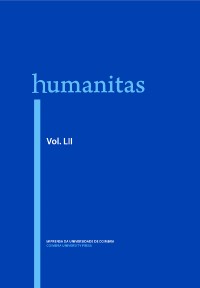Please use this identifier to cite or link to this item:
https://hdl.handle.net/10316.2/28184| DC Field | Value | Language |
|---|---|---|
| dc.contributor.author | Ramalho, Américo da Costa | - |
| dc.date.accessioned | 2014-01-29T14:16:44Z | |
| dc.date.accessioned | 2020-10-02T23:08:20Z | - |
| dc.date.available | 2014-01-29T14:16:44Z | |
| dc.date.available | 2020-10-02T23:08:20Z | - |
| dc.date.issued | 2000 | - |
| dc.identifier.issn | 2183-1718 | - |
| dc.identifier.uri | https://hdl.handle.net/10316.2/28184 | - |
| dc.description.abstract | Four epigrams reflecting both the humanisfs preoccupation with the education of Theodosius, the little heir of the Bragança ducal family, and with his own health. He is now gout ridden and, very far from the once aggressive buli, he feels reduced to the situation of the anvil vvhich cannot return the blows when beaten. Notice that incus (anvil), in Portuguese bigorna (from Latin bicornua),may allude to the touro (lat. taurus), buli. | eng |
| dc.language.iso | por | - |
| dc.publisher | Faculdade de Letras da Universidade de Coimbra, Instituto de Estudos Clássicos | - |
| dc.title | O touro e a bigorna: quatro epigramas de Cataldo | por |
| dc.title.alternative | The buli and theanvil: four epigrams by Cataldus | por |
| dc.type | article | - |
| uc.publication.collection | Humanitas vol. 52 | - |
| uc.publication.firstPage | 287 | - |
| uc.publication.lastPage | 295 | - |
| uc.publication.location | Coimbra | - |
| uc.publication.journalTitle | Humanitas | - |
| uc.publication.volume | 52 | por |
| uc.publication.section | Artigos | - |
| uc.publication.orderno | 11 | - |
| uc.publication.area | Artes e Humanidades | - |
| uc.publication.manifest | https://dl.uc.pt/json/iiif/10316.2/28184/258418/manifest?manifest=/json/iiif/10316.2/28184/258418/manifest | - |
| uc.publication.thumbnail | https://dl.uc.pt/retrieve/12011240 | - |
| item.fulltext | With Fulltext | - |
| item.grantfulltext | open | - |
| Appears in Collections: | HVMANITAS | |
Files in This Item:
| File | Description | Size | Format | |
|---|---|---|---|---|
| humanitas52_artigo11.pdf | 3.36 MB | Adobe PDF |  |
Items in DSpace are protected by copyright, with all rights reserved, unless otherwise indicated.
